For the healthy growth of plants, potassium is a crucial macronutrient with the capability to play a central role in multiple physiological processes, such as photosynthesis, protein synthesis, and water regulation. High potassium fertilizers formulated especially with optimum supply for this essential nutrient are very useful in stimulating strong plant development and achieving maximum crop yield. The blog further explores the intricacies of high-potassium fertilizers that influence plant health, resistance to diseases, and total productivity. Farmers and gardeners can greatly improve the quality and quantity of their harvests by understanding how potassium affects plant growth through targeted fertilization approaches.
Why is High Potassium Fertilizer Important for Your Lawn?
A high potassium fertilizer is crucial for your lawn because it helps the grass survive drought, disease, and temperature extremes. Potassium reinforces the overall structure of grass plants by enhancing their resilience and vitality. This element also improves water utilization efficiency and causes the grass to have a stronger immune system; therefore, it looks more robust and greener. In addition to enhancing stronger growth, you can increase your garden’s life span by ensuring sufficient potassium.
What Role Does Potassium Play in Plant Health?
Potassium is vital for many essential plant functions that enable them to grow properly. It acts as an osmoregulatory agent primarily responsible for regulating cell water content, making plants maintain turgor pressure under conditions of limited water supply. Additionally, this nutrient helps in ATP (adenosine triphosphate) formation, facilitating photosynthesis in green leaves. Furthermore, potassium activates over 60 enzymatic processes involved in plant metabolism and is necessary for the synthesis of proteins and starch.
Technically speaking, higher stomatal conductance due to optimum uptake rates has been identified as one key factor behind increased gas exchange, together with lower transpiration rates per unit leaf area. For various species at different developmental stages, the normal K range lies between 1.5% – 5% of dry weight percentage per plant tissue type, respectively. Experimentally identified K deficiency symptoms include chlorosis (yellowing) and other necrosis within marginal leaf sections, which usually progress inwardly towards veins. Consequently, farmers must devise targeted fertilization methods to keep plants healthy while maximizing productivity.
How Does High Potassium Fertilizer Benefit Your Lawn?
It makes your lawn more resilient and healthier when one uses high potassium fertilizers on them. These chemical elements help turfgrass withstand environmental stressors such as droughts, heat waves or cold temperatures by improving cell wall strength in the cells that make up turfgrass. When water levels are low, it maintains turgidity and allows cells to function better in case of water shortage. Additionally, potassium promotes root growth resulting in a denser root system that can reach deeper soil layers for more nutrients and moisture. Therefore most grasses should maintain adequate K levels between 2.5% – 4.5% in their dry weight for robust energy production via ATP formation and enzyme activation [134]. Lawns with optimal potassium concentrations appear healthier as they reduce the chances of developing diseases and pests because well-fed roots make healthy plants less prone to disease pathogens.
Can High Potassium Fertilizer Help with Potassium Deficiency?
Yes, high potassium fertilizer is effective at correcting potassium deficiency on lawns. In turfgrasses, potassium deficiency may lead to weak plants, retarded growth, and increased plant susceptibility to different environmental stresses, including diseases. The necessary nutrient levels are restored by applying high potassium fertilizers to the lawn hence allowing better water regulation, improved root development as well as the ability of grass plants to resist diseases effectively. It has been established that all these processes (photosynthesis, enzymatic activity, protein syntheses) require normal amounts of potassium to ensure that lawns remain healthy and flourishing. Regular checking of soil content will help one determine if there is a need for the application of high K fertilizers on turf grasses or not, depending upon the specific requirement cases for an individual lawn owner.
How to Choose the Best High Potassium Fertilizer?
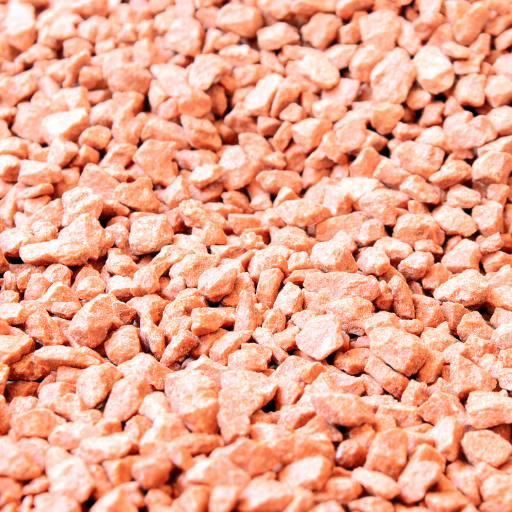
To choose the best high potassium fertilizer for your lawn, think about some important things. Firstly, you need to evaluate potassium content in the fertilizer. This is usually expressed as the third number on an N-P-K (nitrogen-phosphorous-potassium) label. Search for a higher third number formula to ensure adequate potassium concentration. Secondly, select the right form of potassium like potassium sulfate or potassium chloride; the latter can also be used but it is not preferred over the former due to its high salt index and additional sulfur content. Thirdly, consider slow-release versus quick-release formulations depending on whether you want immediate or long-term benefits for your lawn. Slow-release fertilizers provide a steady supply of nutrients over time, promoting sustained growth while quick-release options offer an immediate nutrient boost. Make sure that this product is suitable for your type of grass and complements results from a soil test so that it could feed your plants properly.
What To Consider In A High Potash Fertilizer NPK Ratio?
When identifying the ideal N-P-K ratio for a high potash fertilizer, focus on products where the third number is significantly higher than the first two numbers. This indicates increased levels of potash are required to improve overall health and resilience in lawns. For example, an N-P-K ratio such as 5-5-20 ensures increased availability of potash without compromising nitrogen and phosphorus requirements at much-needed amounts.Additionally, given specific needs by grass type and soil testing results, selecting blended formulas that supports optimal growth and development are vital for turfgrass.
Understanding Types: Liquid vs Granular Fertilizer
Liquid versus granular fertilizers differ in how they are applied onto lawns as well as their rate of nutrient release which may or may not be good enough for particular needs of lawn care programs? What equipment do I need? The liquid kind requires mixing them with water inside a sprayer which is then sprayed. These will be ideal in case of immediate response situations or for rectifying any nutrient imbalances seeing as they are soluble and therefore can be absorbed almost immediately by grass roots. For instance, most liquid fertilizers have an N-P-K ratio such as 12-4-8, meaning that there are fast-growing ones with essential nutrients being rapidly delivered to the soil.
On the other hand, granular fertilizers are applied onto lawns as solid particles scattered around it. These need water and microbial activity to disintegrate the granules because their nutrients are not released instantaneously, hence giving a slow-release effect. This feature makes them well suited for long-term nutrient supply and consistent turf health. Granular fertilizers come in various forms; for example, those available range from, say, 15-5-10 or 20-5-20, designed to meet different growth needs as well as different types of soils.
Technical Parameters:
- Release Rate:
- Liquid Fertilizers: Fast
- Granular Fertilizers: Slowly controlled
- Application Method:
- Liquid Fertilizers: Spray (with hose-end or pump sprayer)
- Granular Fertilizers: Broadcast spreader (drop spreader)
- Nutrient Ratio Examples:
- Liquid Fertilizers: N-P-K ratio such as 12-4-8
- Granular Fertilizers: N-P-K ratios like 15-5-10 or 20-5-20
Both types of fertilizers have optimal use contexts, with liquid varieties catering to immediate nutrient needs and granular forms supporting long-term soil and turf maintenance. The ultimate decision between them should depend on your lawn’s specific conditions, what you want to achieve at the moment, and the extensive outcomes brought about by soil test results.
Can Customer Reviews Help in Picking High Potash Fertilizers?
It is crucial to consider a range of reviews to account for user experience variability and identify any common issues or benefits noted repeatedly. For example, reputable gardening sites will often feature reviews from satisfied users who attest to the fertilizer’s efficacy and ease of use. Nevertheless, these kinds of comments must be assessed critically so as not to mislead potential buyers. Such information includes the plant types or soil conditions on which the fertilizers were utilized thus guiding informed purchasing decisions based on personal requirements.
Additionally, such reviews usually contain valuable details about when it was applied, like what species were involved or even soil composition, among other things, that can aid better decision-making by someone who understands their needs. Reviews from reputable gardening sites frequently highlight users’ satisfaction with the performance and ease of application, helping prospective buyers gauge effectiveness and reliability. It is advisable; however, to check different customer testimonials in order to know more about this specific issue and help you find out whether they are mainly positive or mostly negative. We must also remember that reviews differ from individual experiences, with plenty of dissimilarities existing along with certain common aspects.
How to Use High Potassium Fertilizer for Optimal Plant Growth?
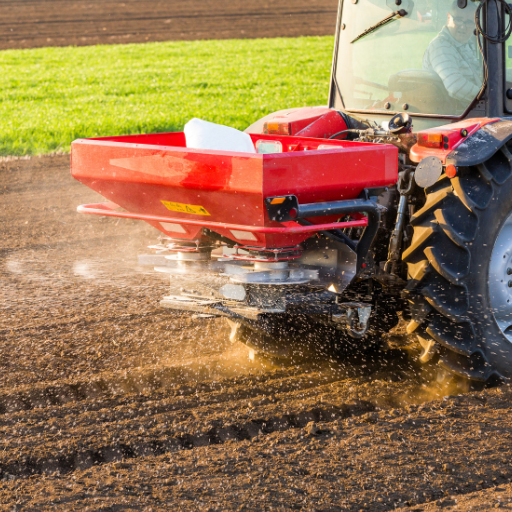
Robust plant growth, especially in fruiting and flowering species, is significantly dependent on high potassium fertilizers. To effectively use high potassium fertilizer, begin by doing a soil test to establish the already present potassium levels and specific needs for your plants. The application of the fertilizer should be as indicated by the soil test results, which in most cases means it should be put at the base of the plants to make sure that it gets to the root zone. When dealing with liquid high potassium fertilizers, they should be prepared in accordance with the instructions on their packaging and then plants are watered deeply. For granular ones, they should be evenly distributed on top of the soil surface before being watered so as to promote nutrient absorption. You must follow recommended application rates in order to avoid nutrient imbalances or root burn. Consistent observation of plant health and soil nutrient levels will enable timely adjustment of fertilization programs leading to optimum growth and yield.
When and How to Apply Potash Based Fertilizers?
Potassium-rich potash-based fertilizers should be applied depending on different stages of growth for every crop.
- Timing:Apply during growing season ideally just before flowering so as provide enough potassium when it is needed by crops most.For fruit trees applying these fertilisers prior to initiation of fruits can enhance fruit quality and yield
- Application Methods:
- Soil Application: Spread granular potash uniformly over topside of soil & mix it into topmost layer .This ensures slow release and uptake via roots
- Foliar Spray: Make a solution of potash according to the product label’s instructions. Sprinkle it directly onto leaves to quickly correct deficient potassium.This method is useful for immediate uptake by the plant.
- Fertigation: Dilute potash-based fertilizer into irrigation water. This enables direct delivery nutrients into roots hence efficient uptake.
- Dosage and Concentration:The amount required varies according to soil test recommendations and specific crop requirements.At least 0.2% potassium solution is efficient for foliar application while soil application may range from 100-200 kg per ha depending on K levels of the soil and crop demand. Follow the manufacturer’s directions and adjust according to the observed plant response.
Salt buildup and possible nutrient imbalances can be avoided through consistent monitoring and soil testing, which are two good ways of avoiding over-application.
Importance of Conducting a Soil Test Before Application
Soil test before potash application is vital for several reasons. First, it gives an accurate picture of the current nutrient level in the soil, including pH values, thereby enabling a specific fertilizer plan that will meet the needs of a particular crop. This minimizes both under and over-application of nutrients, hence minimizing chances of nutrient imbalances together with potential environmental damage that could result from them. Moreover, this method helps in identifying any deficiencies or toxicities that would have been corrected before planting; thus, soil testing provides solutions prior to the sowing period. Right nutrient balance also leads to maximization of plant growth rates, increased crop yield as well as improved quality and resource use efficiency thus promotes sustainable agriculture practices in future.
How Often Must You Apply Fertilizer With High Potassium Content.
Frequency of application of high potassium fertilizers is determined by a number of factors such as soil test results, crop type and stage of growth. In general, for most crops it is advisable to use potassium fertilizers during planting and at important stages of growth such as flowering and fruiting. For instance, potassium demanding crops like tomatoes and potatoes require additional applications throughout the growing season. It’s very critical that the soil always has enough potassium in order to avoid deficiencies which can hinder crop growth or yield poor yields. Regularly testing the soils and monitoring plant health can help identify when is best time for applying fertilizer so as to maximize nutrient utilization efficiency without harming the environment
What are the Benefits of High Potassium Fertilizer for Plant Growth?
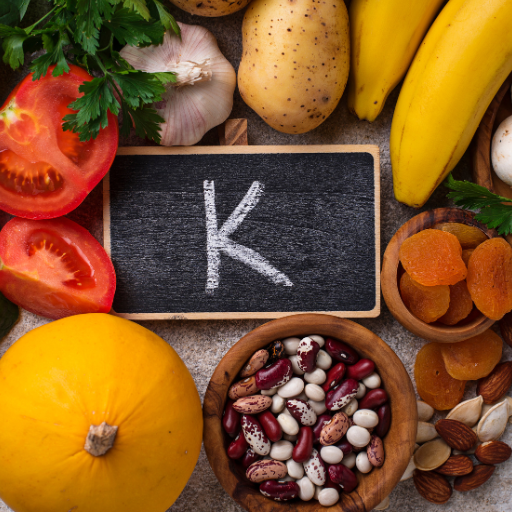
Improving the physiological process of growth in plants is an important role played by high potassium fertilizers. In energy and photosynthesis, it is needed for activating the enzymes involved leading to stronger growth. Something, that helps maintain cell structure and improves plant drought tolerance, but also has been said to play a role in the generation of ATP (adenosine triphosphate). It is believed to increase yields and improve quality by regulating flower development and fruit set. They can also thicken their cell walls to prevent infections when attacked by pathogens. Proper use of high-potassium fertilizers ensures a balance of nutrients that promote healthy plants with higher yields.
Can it Improve the Health of Flowers and Fruit Trees?
Yes, it can considerably enhance the health of flowers and fruit trees. It takes part in protein synthesis required for flowering and starch production needed for growing fruits. A balanced supply supports these transfers, thus leading to attractive, huge flowers and delicious fruits. In particular, its importance lies in larger size, better coloration, and sweeter taste, which are critical quality features.
- Optimal Potassium Levels: The ideal soil potassium level for most fruit trees usually ranges between 150 and 250 ppm (parts per million), which ensures nutrient availability at levels matching peak demand during key growth stages.
- Application Rates: Recommended rates differ depending on the type of fruit tree being grown and soil test results; for example, apple trees may require an application of 1.5-2.5 lb/yr/tree K.
- Methods of Application: It can be used as a basal dressing or top-dressing during periods such as sowing, planting, or the fruit setting stage, respectively. Some application methods include foliar sprays and soil incorporation.
This rationale arises from extensive agronomic research on maintaining proper potassium levels so as to optimize plant metabolic functions while enhancing resistance against abiotic stresses.
Does it Help Develop Stronger Roots?
Yes, high potassium fertilizer indeed promotes strong root system development in plants. Potassium plays a vital role in overall root system health by regulating water and nutrient uptake. It increases root growth significantly through cell division and elongation, leading to bigger and more efficient roots. This in turn enhances water and nutrient availability to the plant thereby promoting general growth as well as reducing susceptibility to stress.
- Root Biomass Increase: According to studies, soil with an optimal level of about 200-300 ppm (parts per million) contributes to a greater increase in the number of roots compared to soils with low levels of potassium.
- Enhancement of Root Cell Wall Structure: Sufficient amounts of this mineral can help make roots strong enough for expansion thus ensuring their ability to function better.
- Water and Nutrient Uptake Efficiency: During the early stages of seedling establishment and during dry spells when nutrients are scarce, specific advantages arise from having K that improves both water use efficiency and nutrient uptake kinetics.
These parameters are based on extensive agronomic research, which has revealed that maintaining optimum levels of K is important for strong root system architecture and improved nutrient uptake.
Common Issues and Troubleshooting in Using High Potassium Fertilizer
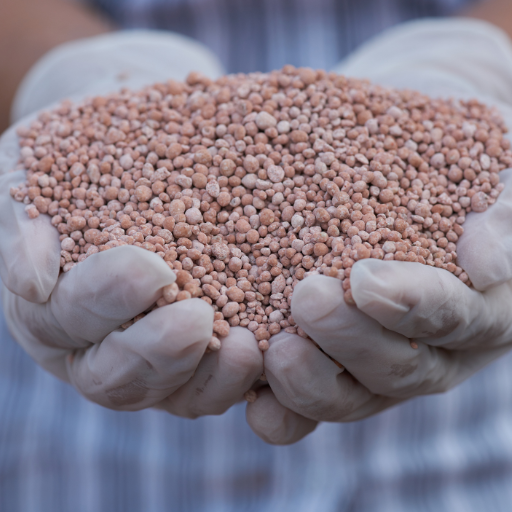
While high potassium fertilizer offers substantial benefits, there might be various issues that might require troubleshooting:
- Over-application: Too much potassium may result in unbalanced nutrition, mainly with calcium and magnesium. Deficiency symptoms such as chlorosis or poor plant growth can be caused by an insufficient supply of these nutrients. So, it is important to ensure that the nutrient balance is maintained.
- Soil Salinity: High levels of potassium contribute to increased soil salinity, which, in turn, negatively affects plant health by reducing water uptake and causing osmotic stress. This negative effect can, however, be mitigated through proper irrigation practices and regular monitoring using soil tests.
- Application Timing and Method: Wrong application timing or method can decrease the efficiency of potassium fertilizers. For the best results, apply during critical growth stages and evenly spread across the root zone. As well, applying precision agriculture techniques enhances application accuracy.
To address these issues, one must regularly test his/her soil, adopt integrated nutrient management practices, and follow recommended guidelines for using high potassium fertilizer.
What to Do if You Over-apply Potash Fertilizer?
- Leach the Soil: Leaching is one of the initial steps that should be taken into account when faced with this problem for eliminating excessive amounts of potassium from soil. This process involves adding large volumes of water to make surplus quantities soluble and wash them via a root zone taking them out from a normal environment. It is usually advised that at least 6 inches depth coverage over that particular area would be enough for an efficient flushing away procedure for excess salts.
- Apply Calcium or Gypsum: If there are too many ions associated with potassium deficiency in relation to other elements, applying any substance containing calcium will help offset this imbalance. Gypsum (calcium sulfate) serves as a source displacing excess K ions, facilitating their leaching from soils.The gypsum rate to use may depend, but it is often recommended to use about 1-2 tons per acre, depending on the severity of the problem.
- Monitor and Adjust Irrigation Practices: When excess potash is applied, soil salinity can also be high. By using quality water for irrigation and ensuring proper drainage, one can minimize salt concentration. To avoid further stress on crops, soil moisture sensors help maintain optimal levels of soil moisture content.
- Frequent Soil Testing: Timely monitoring of salinity levels and nutrient status through regular soil testing helps to prevent problems that may cause deficiencies or toxicities. Comprehensive soil tests must measure parameters like EC (Electrical Conductivity) and EPP (Exchangeable Potassium Percentage) for actionable information.
- Integrate Organic Matter: Also, organic matter such as compost or mulch aids in improving the structure of soils and enhances microbial activity thereby supporting natural remediation for high K levels. The presence organic materials in the soil not only facilitate air penetration but also water seepage promoting leaching out of excess nutrients.
By observing these remedies, one can avert potential damage from over-applied potash fertilizer and restore an appropriate nutritional environment suitable for normal plant life.
How to Identify a Potassium Deficiency?
To identify if plants are short of potassium, we should examine visible symptoms and conduct some tests on our soils. The visual symptoms include chlorosis or yellowing starting from older leaves towards their tips. Brown spots or leaf scorching along margins too might appear concurrently with this situation when examined closely. Additionally, small size, together with poor quality, have been used as other indicators that plants have inadequate amounts of potassium inside their cells.
Potassium deficiency diagnosis can be established through soil tests. Soil testing is effective on parameters such as soil potassium levels via a soil test kit that evaluates the exchangeable potassium content. The thresholds are different with respect to soil type, but typical values would indicate that the concentration of potassium below 100 ppm (parts per million) implies deficiency in most crops.
A diagnosis of potassium deficiency can also be confirmed by plant tissue analysis. Depending on the particular crop, sufficiency ranges for potassium in plant tissues generally fall between 3-5%. This means if tissue analysis shows levels of potassium less than these ranges, then it confirms that there is a deficiency.
By following these indicators and using proper soil and tissue testing techniques, you can accurately diagnose a lack of Potassium and take corrective measures to restore optimum nutrient balance.
Can Higher Phosphorus Fertilizer Maintain Nutrient Balance?
Because it mostly addresses phosphorous needs and might overlook on other essential nutrients like Nitrogen and Potassium that are needed, high phosphorus fertilizer cannot balance nutrient levels effectively. Excessive application of phosphorous may even lead to nutrient imbalances, hence could result in micronutrient shortages such as zinc and iron. The best practice in managing nutrients involves an integrated approach where all requirements, including those specific for certain crops and soils, are taken into consideration rather than focusing on just one element among others. To maintain harmonious nutrient levels for healthy plant growth, regular soil testing along with customized fertilization strategies must be employed.
Top Recommended High Potassium Fertilizers in the Market
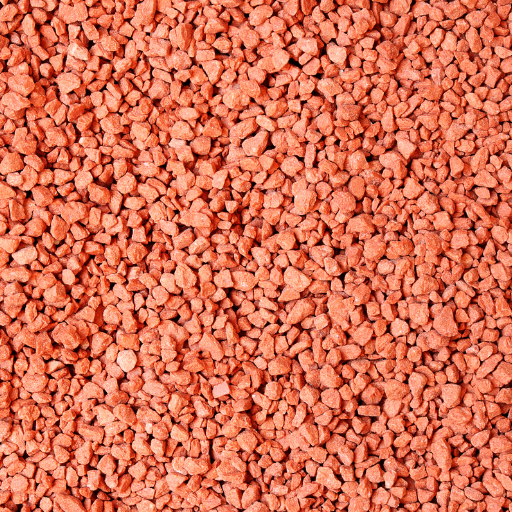
Essential for robust plant growth and optimal agricultural yield, high potassium fertilizers are. The modern market offers various high potassium fertilizers formulated to deal effectively with potassium deficiencies. These fertilizers often have a well-balanced blend of macronutrients that support the plants’ overall health. In selecting a high-potassium fertilizer, it is important to consider your crops and soil needs in particular. Other common formulations include sulfate of potash and potassium nitrate which supply not only potassium but also improve overall soil fertility. Moreover, many high-potassium fertilizers are developed in such a way that they can be easily absorbed and used by plant systems, leading to quick and efficient nutrient uptake.
In Depth Review of 0-0-25 Fertilizer
This type of high-potassium fertilizer contains 25% by weight of potash with no nitrogen or phosphorus for 0-0-25 fertilizer. It is specifically designed for addressing low levels of potassium without adding nitrogen or phosphorus into the soil. Usually, main ingredient in 0-0-25 fertilizer is either potassium sulfate or chloride. This is because these compounds dissolve readily in water, making the availability of potassium highly efficient for plants.
A range of crops including fruits, vegetables and tubers have a higher requirement for Potassium particularly at critical development stages like flowering and fruit set so using 0-0-25 could be beneficial to them among other types of plants preferring heavy doses at certain stages The best application procedures for this substance include enabling essential physiological processes like photosynthesis, enzyme activation as well as osmotic regulation on leaves, stems as well as roots while increasing resistance against diseases besides dry spell tolerance and general improvement in crop yield.
When applying 0-0-25 fertilizer, you must adhere to recommended guidelines based on soil tests and crop requirements. Exceeding the right amounts may lead to salt buildup that potentially harms plants’ roots and degrades soil fertility over time. Therefore, incorporating this fertilizer in a well-balanced nutrient management strategy is essential to realizing the best results in agriculture.
Advantages of utilizing Simple Lawn Solutions Products
For keeping healthy and bright lawns, simple lawn solutions products offer numerous advantages. They usually have a combination of vital nutrients that assist in promotion of strong turf growth, facilitating root development and enhancing soil quality generally. In most cases these products include microelements and organic contents promoting nutrient availability as well as uptake by plants. Subsequently, they facilitate homeowners to acquire an emerald green grassy view with less effort while taking care of certain lawn problems like lightening or weakening, causing susceptibility to disease. Furthermore, routine use can boost its drought resistance as well as enable it to withstand other environmental pressures, eventually giving a more resilient turf.
Frequently Asked Questions (FAQs)
Q: What is a high-potassium fertilizer and how does it benefit my plants?
A: A high-potassium fertilizer is a type of plant food that contains a high concentration of potassium, an essential nutrient for plant growth. It benefits your plants by enhancing root strength, improving drought resistance, and increasing the overall plant hardiness, leading to a more vigorous and productive harvest.
Q: Can I use a high-potassium fertilizer for my lawn?
A: Yes, you can use a high-potassium fertilizer for your lawn. It helps in treating a lawn by promoting root development and enhancing drought resistance, ensuring that your grass remains healthy and greener throughout the season. Opt for a liquid lawn fertilizer for easy application.
Q: How do I apply liquid lawn food to my grass?
A: To apply liquid lawn food, use a garden sprayer and evenly distribute the fertilizer across your lawn. Make sure to follow the instructions on the label regarding the appropriate amount to use per sq. ft. This method ensures that the nutrients are quickly absorbed by the grass, providing faster results.
Q: Is there a specific time of year to use high-potassium fertilizers?
A: High-potassium fertilizers can be particularly beneficial during the summer and fall seasons. During these times, plants demand more potassium to enhance plant resilience and prepare for the colder months ahead. It is also a good time for cool season grass types like tall fescue.
Q: Are there organic high-potassium fertilizers available?
A: Yes, there are organic high-potassium fertilizers available that are suitable for organic gardening. These fertilizers are made from natural sources and are free from synthetic chemicals, making them safe for indoor and outdoor use.
Q: How can I improve the yield of my fruit trees with high-potassium fertilizers?
A: Applying a fruit tree fertilizer with high-potassium content improves the trees’ ability to produce more fruit by enhancing overall plant health, improving nutrient uptake, and strengthening the root system. Potash 0-0-60 fertilizer is a great option for this purpose.
Q: How much high-potassium fertilizer should I use for my garden beds?
A: The amount of high-potassium fertilizer you need depends on the size of your garden beds and the specific needs of your plants. Commonly, you will find recommendations such as using a 32 ounce liquid fertilizer for a small garden or adjusting the dosage based on the sq. ft. of your garden area.
Q: Can high-potassium fertilizers be used for indoor plants?
A: Yes, high-potassium fertilizers can be used for indoor plants. Choose a product that is suitable for both indoor and outdoor use, such as a liquid fertilizer, to ensure that your indoor plants receive the necessary nutrients for optimal growth.






